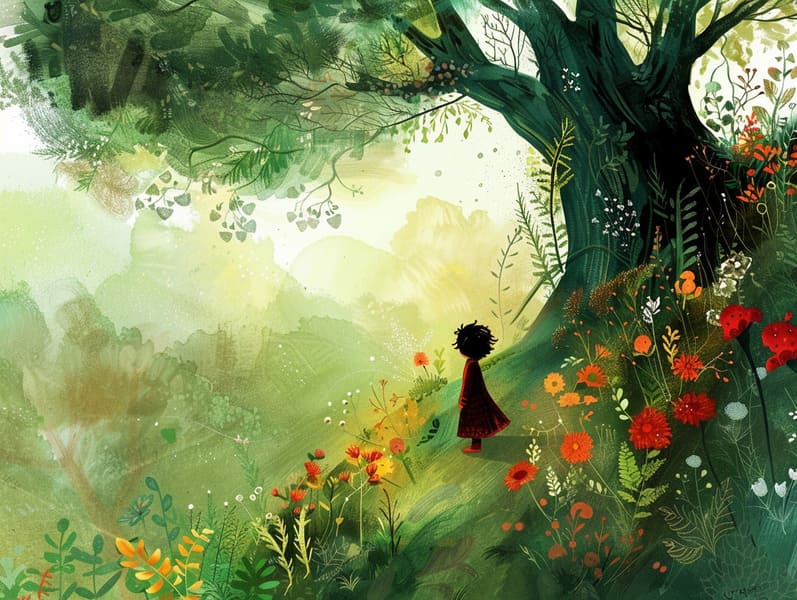Uncovering the Past of Short Fairy Tales and Its Continued Beauty.
Uncovering the Past of Short Fairy Tales and Its Continued Beauty.
Blog Article

Children's fairy tales have historical significance. These stories have been recounted from one generation to the next millennia before they were ever inscribed. They were born from a variety of societies, including Indigenous traditions. They were initially transmitted among elders, often carrying themes and messages relevant to the societal norms and beliefs of the time.
The Grimm brothers, the two Grimm brothers, were among the first to compile many of these beloved fairy tales. Their anthology, "Grimm's Fables," included stories like "The Story of Cinderella," "The Story of Hansel and Gretel," and "The True Story of Snow White," which have since become mainstays in the world of beloved fairy tales. Similarly, H. C. Andersen's charming tales, such as "The Sea Maid," and "The Duckling that Could," have captivated hearts worldwide, guaranteeing their place in the pantheon of famous fairy tales.
Despite being ancient, these stories remain as relevant as ever, especially as bedtime stories for kids. These charming stories are now available in diverse formats, including richly illustrated books, magical animations, and internet fairy tales.
Their persistent charm can be linked to several magical reasons:
Valuable Lessons: Old fairy tales often impart important moral lessons. Narratives like "The Shepherd Boy and the Wolf" teach the benefit of integrity, while "The Hare and the Tortoise" illustrate the benefits of steadfastness and modesty. These tales offer young readers clear distinctions between moral and immoral, shaping their moral compass in a subtle yet meaningful way.
Compassion and Insight: Ancient fairy tales frequently include heroines facing trials and tribulations, urging children to understand with their struggles and back their triumphs. For instance, "Beauty and Her Beast" demonstrates the virtue of seeing beyond the surface to understand the inner spirit of a being, nurturing awareness and knowledge.
Cultural Awareness: Many classic fairy tales are steeped in the cultural contexts from which they sprang. Discovering these tales can provide captivating looks into different backgrounds, building a sense of global understanding and recognition.
Fantasy and Innovation: The mythical elements in ancient fairy tales—supernatural elements—awaken children’s dreaming abilities. These tales move readers to magical realms, revitalizing fantastical thinking and a sense of awe that persists a lifetime.
Classic fairy tales are not only charming but also illuminating. They function as magical tools in building various mind and heart abilities in young readers. When traditional check here fairy tales are told out loud, they develop speaking abilities by introducing new phrases and detailed sentence structures. This practice also develops listening skills and attention span, as young ones hang on every word, excited to see what happens next.
Furthermore, reflecting on the themes and characters of timeless fairy tales can strengthen thinking skills and thinking skills. Young ones learn to detect patterns, predict happenings, and know cause and effect. These debates also facilitate the young say their thoughts and feelings, enhancing their emotional intelligence.
In today’s information age, the presence of online fairy tales has made these narratives more obtainable than ever. Web-based platforms and programs supply vast collections of ancient fairy tales that can be explored or listened via anytime, anywhere. Fairy tales recited are particularly sought after, offering an interactive way for young readers to relish these magical stories. Read-aloud books and narrated videos transport characters and settings to life, often augmented by spellbinding melodies and tunes that augment the story adventure.
The persistent attraction of traditional fairy tales lies in their ability to adapt to modern society while keeping their central messages. Contemporary adaptations of these fairy tales often incorporate more representative characters and modern settings, making them understandable to today’s audience. However, the central morals of daring, goodness, and equity remain unchanged, continuing to reach readers of all ages.
Old fairy tales also offer a sense of ease and homeliness. They afford a organized narrative with a unmistakable beginning, middle, and end, often coming to a close with the culmination of conflicts and the triumph of good over evil. This constancy can be heartening for children, proffering a sense of unwaveringness in an unstable world.
Classic fairy tales continue to spellbind and coach new generations, maintaining their charm and significance in modern society. As children's bedtime stories, they distribute a perfect blend of fantasy and learning, boosting moral values, empathy, and creativity. The prevalence of online storybooks and the prevalence of fairy tales voiced secure that these old fairy tales remain attainable to new generations.
By sustaining and imparting these stories, we continue to esteem the rich tapestry of human imagination and cultural heritage. Whether you are exploring a vividly illustrated book, exploring a web-based collection, or listening on an audio story, the magic of timeless fairy tales is always within reach. These narratives reveal of the immortal spell of stories and its ability to draw us together across eras and regions.
Regardless if you are experiencing a artistically illustrated book, accessing a online library, or listening via an voice book, the grandeur of popular fairy tales is always within reach.
These narratives show us of the unceasing nature of tales and its ability to draw us together across eras and regions, forming a connection that captivates and teaches alike.